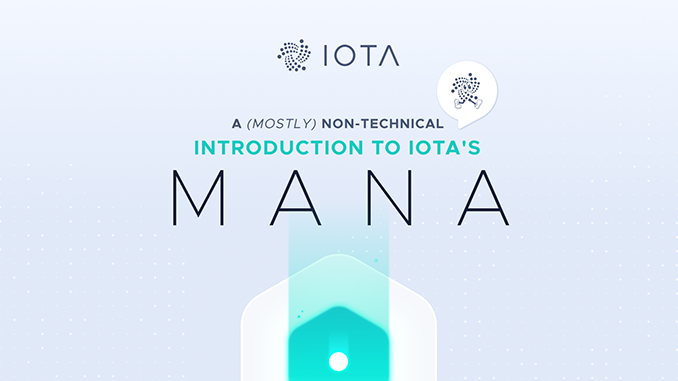
In a decentralized IOTA 2.0, Mana is expected to play the crucial role in regulating validation processes in the future. We explain Mana for IOTA.
IOTA is in the technological evolution towards a decentralized network. In the current state of IOTA 1.5, the tanglenet is still dominated by a central coordinator who decides in case of doubt whether a transaction should be valid and documents it irrevocably. In a future IOTA 2.0, however, this central coordinator will be abolished and therefore a new system must be found with which transactions are validated. The developers at IOTA have come up with Mana for this purpose. In a blog post, the IOTA Foundation deliberately explains Mana from a non-technological perspective.
According to this, network participants will be automatically allocated Mana in IOTA 2.0, depending on the amount of their credits in IOTA. In reality, there will then also be two types of mana:
- cMana stands for Consensus Mana. With these tokens, network points continuously vote on which transactions are to be considered valid and released. If there is a disagreement, the idea is to reach a quick consensus by having neighboring network points consult each other. IOTA compares this to the natural organization of flocks of birds, where in flight the collective decides where to go without a boss.
- aMana stands for Access Mana. This type of mana is used to acquire the right to initiate transactions and have them validated. If a situation arises in the IOTA 2.0 network where a queue forms, priority can be acquired through aMana.
IOTA has always emphasized that there are no fees in Tanglenet. Unlike other blockchains, IOTA has not known transaction fees and intends to stick to this unique selling point under IOTA 2.0. To further refine the complex system of cMana and aMana, two additional factors are included in the continuous consensus building of IOTA 2.0, namely randomness and reputation. The random determination of nodes responsible for current transactions is for security purposes. Thus, the network participant who orders a transaction cannot know who will decide it. This makes it difficult or impossible for malicious participants to link manipulations to transactions. The same applies to the reputation factor. This measures how reliably a network point has behaved in the past. In the event of any discrepancies, validators with a higher reputation are then granted more voting rights.
IOTA 2.0 – nothing works without Mana
Currently, the Testnet Pollen is rehearsing the right balance for Mana in IOTA 2.0. This challenge will probably also accompany the next Testnet DevNet for IOTA 2.0. This is because there are still opinions that a market will develop around mana and that mana would thus become monetary. However, this would undermine the principle of no fees for IOTA. The head of Cardano (ADA), Charles Hoskinson, has already attracted a lot of criticism in this field with provocative remarks about IOTA.
Conclusion: IOTA takes a special path with Mana
In theory, it sounds pretty smart how IOTA 2.0 wants to organize a powerful decentralized tanglenet without charging any real fees. However, this has yet to be proven in practice; DevNet for IOTA 2.0 will provide experience later this year. IOTA is proud of its special way with Mana – later, the free market will vote on whether Mana really works instead of monetary transaction fees and/or mining rewards for other blockchains.
Best place to buy Bitcoin and IOTA:

Leave a Reply